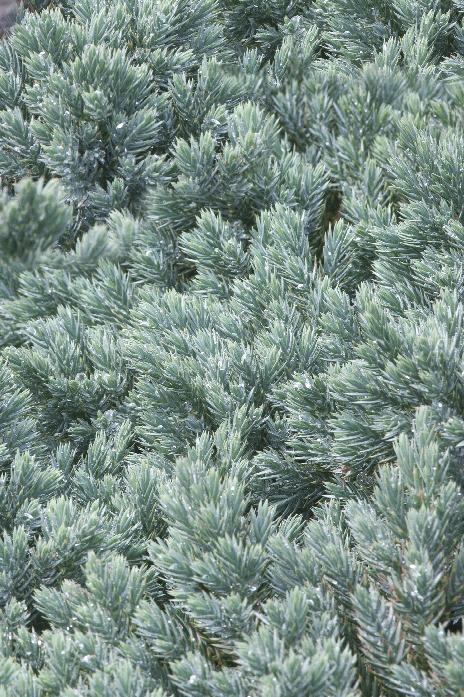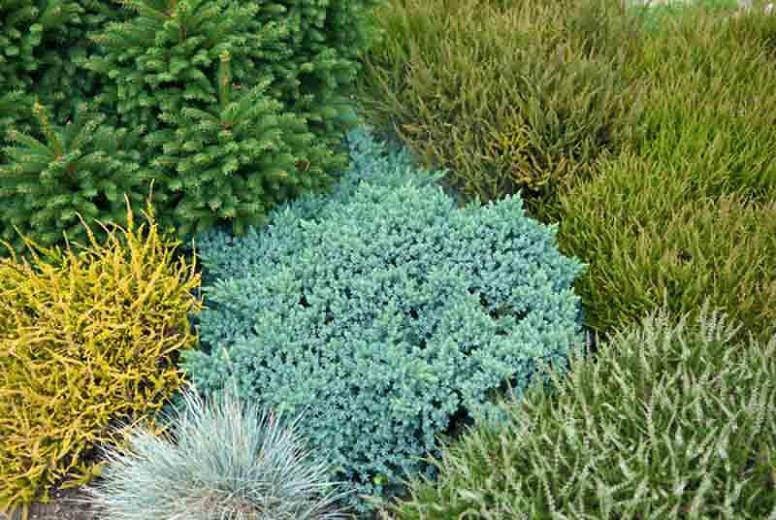

Always read the label on your fertilizer bag, and follow the instructions. Proper fertilization of your Blue Star Juniper will lead to healthier and more disease -resistant plants, as well as provide you with many more enjoyable blooms. Although it is tempting to spend less time by not raking the mulch back during fertilization, the results will be less than desirable, if the fertilizer is applied on top of the mulch. You can then rake the mulch back around the base of the Blue Rug Juniper.

Apply the fertilizer according to the label directions immediately on top of the soil, and be sure to water the plant thoroughly after the application. When you have selected your fertilizer and are ready to apply it, be sure to rake your mulch back to the drip line of each plant. It would not be a bad idea to have a soil sample checked with your local Extension Service before applying fertilizer. If the ph of your soil is not correct, it may affect the ability of your juniper to absorb the fertilizer that is applied.

Blue Star Juniper generally do well in acidic soils with ph readings from 5.5 to 6.8. If you do not have acid soil, soil tests may be necessary followed by ph adjustments. Always consult your Extension Service and your local nursery experts as to specific recommendations of fertilizers for your area. Generally, an application sometime during the first part of March, followed by a second application during the first part of May, and a final third application during the first part of July should be sufficient for you juniper fertilization needs. In the southeastern United States, three fertilizer applications per year are usually adequate to supply your Blue Star Juniper nutritional needs. Organic fertilizers such as Dehydrated Cow Manure or Milorganite may provide an excellent source of slow release nutrients in addition to your primary fertilizer.

No matter what fertilizer you choose: "Always Read the Label." Do not apply more fertilizer than is recommended on the label. Be sure that these fertilizers have minor elements as well. If your juniper are younger plants, and you want them to concentrate their energies on growing for a few years, you may wish to choose a fertilizer that has a higher first number such as 12-4-8 or 10-10-10. For example, a 4-8-8 fertilizer with minor elements included would be a good choice for a well-established juniper. If your plants are well established, and you are not concerned about more growth, choose a fertilizer that has a smaller first number, and a larger second and third number. In choosing the basic type of fertilizer for your Blue Star Juniper needs, it is important to determine what you need your juniper to do. Slow-release fertilizer can help prevent rapid sucker growth that is vulnerable to diseases and insects. Be careful with products such as miracle-grow as these products can burn newly planted plants when not used at the recommended rates. Just sprinkle around the base of the plant and water it in. Follow this up with an early summer application of Espoma Holly-Tone to provide the necessary nutrients and raise the acid level in the soil (which junipers favor). Although many well established Blue Star Juniper perform wonderfully in the garden without being fertilized, they will do even better with a regular fertilization program.Īpply an early spring fertilizer with a product such as Espoma Tree-tone or Plant-tone at the recommended rate to give the plant a boost of nitrogen that will be needed for healthy, abundant foliage. Despite their fast growth patterns, Junipers are considered to be light feeders. In order for Blue Star Juniper to give their maximum performance, certain fertilization requirements must be met. Blue Star Juniper Shrubs are one of the easiest to grow and one of the most underused ornamental available today.


 0 kommentar(er)
0 kommentar(er)
